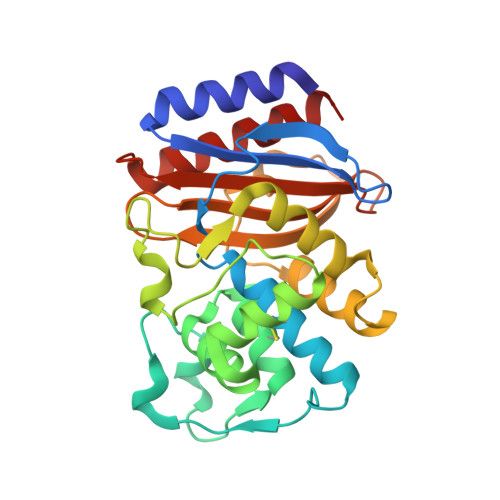A Structural Basis for129Xe Hyper-CEST Signal in TEM-1 beta-Lactamase.
Roose, B.W., Zemerov, S.D., Wang, Y., Kasimova, M.A., Carnevale, V., Dmochowski, I.J.(2018) Chemphyschem
- PubMed: 30151973
- DOI: https://doi.org/10.1002/cphc.201800624
- Primary Citation of Related Structures:
5HVI, 5HW1, 5I52, 5I63, 5KKF, 5KPU, 6APA, 6AYK - PubMed Abstract:
Genetically encoded (GE) contrast agents detectable by magnetic resonance imaging (MRI) enable non-invasive visualization of gene expression and cell proliferation at virtually unlimited penetration depths. Using hyperpolarized 129 Xe in combination with chemical exchange saturation transfer, an MR contrast approach known as hyper-CEST, enables ultrasensitive protein detection and biomolecular imaging. GE MRI contrast agents developed to date include nanoscale proteinaceous gas vesicles as well as the monomeric bacterial proteins TEM-1 β-lactamase (bla) and maltose binding protein (MBP). To improve understanding of hyper-CEST NMR with proteins, structural and computational studies were performed to further characterize the Xe-bla interaction. X-ray crystallography validated the location of a high-occupancy Xe binding site predicted by MD simulations, and mutagenesis experiments confirmed this Xe site as the origin of the observed CEST contrast. Structural studies and MD simulations with representative bla mutants offered additional insight regarding the relationship between local protein structure and CEST contrast.
Organizational Affiliation:
Department of Chemistry, University of Pennsylvania, 231 S 34th St, Philadelphia, PA 19104.














